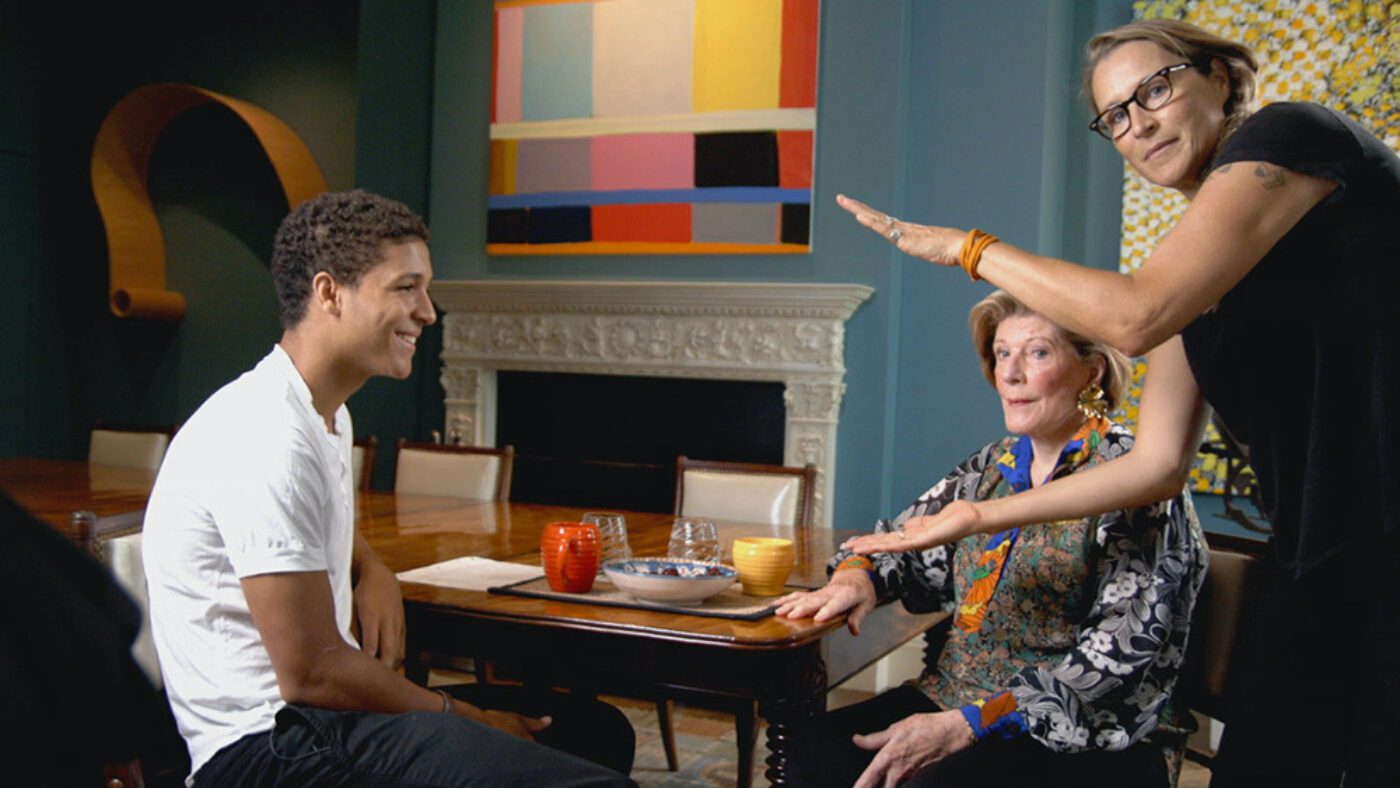When Agnes Gund, philanthropist and president emerita of the Museum of Modern Art, saw Ava DuVernay’s documentary, 13th, about criminal justice and mass incarceration, she experienced a revelation. The movie so affected her that she sold her favorite Roy Lichenstein painting, Masterpiece, and used $100 million dollars from the sale to start Art for Justice, which grants money to artists and activists working to reducing the prison population.
For years people had told Gund’s daughter, filmmaker Catherine Gund (Dispatches From Cleveland, Chavela, What’s On Your Plate?) that she should make a movie about her mother, a heavy hitter in the art world who started Studio in a School in the 1970s, after funding for arts programs in New York City public schools was cut.
Now she’s made that movie. Aggie explores her mother’s world view and commitment to social justice. Gund didn’t just donate her money to the fund, Catherine says—she encouraged other collectors and gallerists to do the same. She didn’t want to ask artists, who are often asked to donate work, Catherine says. But people like Julie Mehretu and Mark di Suvero made donations anyway. So did Mark Bradford after a group of people from Art for Justice Fund (Catherine is on the board, along with DuVernay), including formerly incarcerated artists visited his studio.
“It was a beautiful watershed moment,” Catherine said. “We were at his [Bradford’s] wonderful studio with all those huge canvases sharing stories, and he was so blown away by them, he sold them all and raised $1 million. Art for Justice is different from a traditional charity. Like the Ford Foundation’s Darren Walker says, it’s philanthropy by justice not generosity. It’s seeing a better world.”
Catherine made the movie to document her mother’s unique way of looking at things. At the beginning, she wasn’t planning an entire film, just some taped conversations with her mom. That didn’t go so well.
“I shot one, and it was really bad,” Catherine said. “I was bored. She was bored.”
So Catherine decided to have her four kids ask their grandmother some questions. That went better. Then friends, like Mehretu did some interviews as well. It’s clear in the movie that Gund doesn’t love talking about herself, so having her talk with artists and friends seemed like a good way into her life.
“How did she leave the very wealthy suburban enclave of the Midwest were there were no expectations of her and she was belittled for being a women?” Catherine said. “I need to know how she got here. She sees the world through art, which allows her to entertain vastly different perspectives. It was clear to me that this was the way people would be able to see the prism of who she is. She’s not so forthcoming. She spends most of conversations asking other people questions.”
Help us save local journalism!
Every tax-deductible donation helps us grow to cover the issues that mean the most to our community. Become a 48 Hills Hero and support the only daily progressive news source in the Bay Area.
The film covers Gund’s upbringing in Cleveland as one of six children. She talks about being aware of injustice as a child and realizing her father didn’t think women were worth much. We also see her in conversation with people like filmmaker John Waters, (the MOMA acquired a print of his Pink Flamingos), Thelma Golden, chief curator and founder of the Studio Museum in Harlem, and artist Xaviera Simmons, along with some of her 12 grandchildren.
Starting Art For Justice was a radical act, Catherine thinks. But it’s a part of who her mother is. Seeing 13th was a tipping point, she believes, and Art for Justice was a straight line from her Studio in a School, a way to value creativity and to ask children what they think instead of just asking them for the answer.
“My son Kofi turned to me after he saw Aggie,” Catherine said. “He said, ‘If we’d had studio in a school everywhere, we wouldn’t have needed Art for Justice.”
Aggie is streaming on Prime Video, iTunes, Vudu, and Google Play. A discussion guide to some of the issues raised in the film is also available


